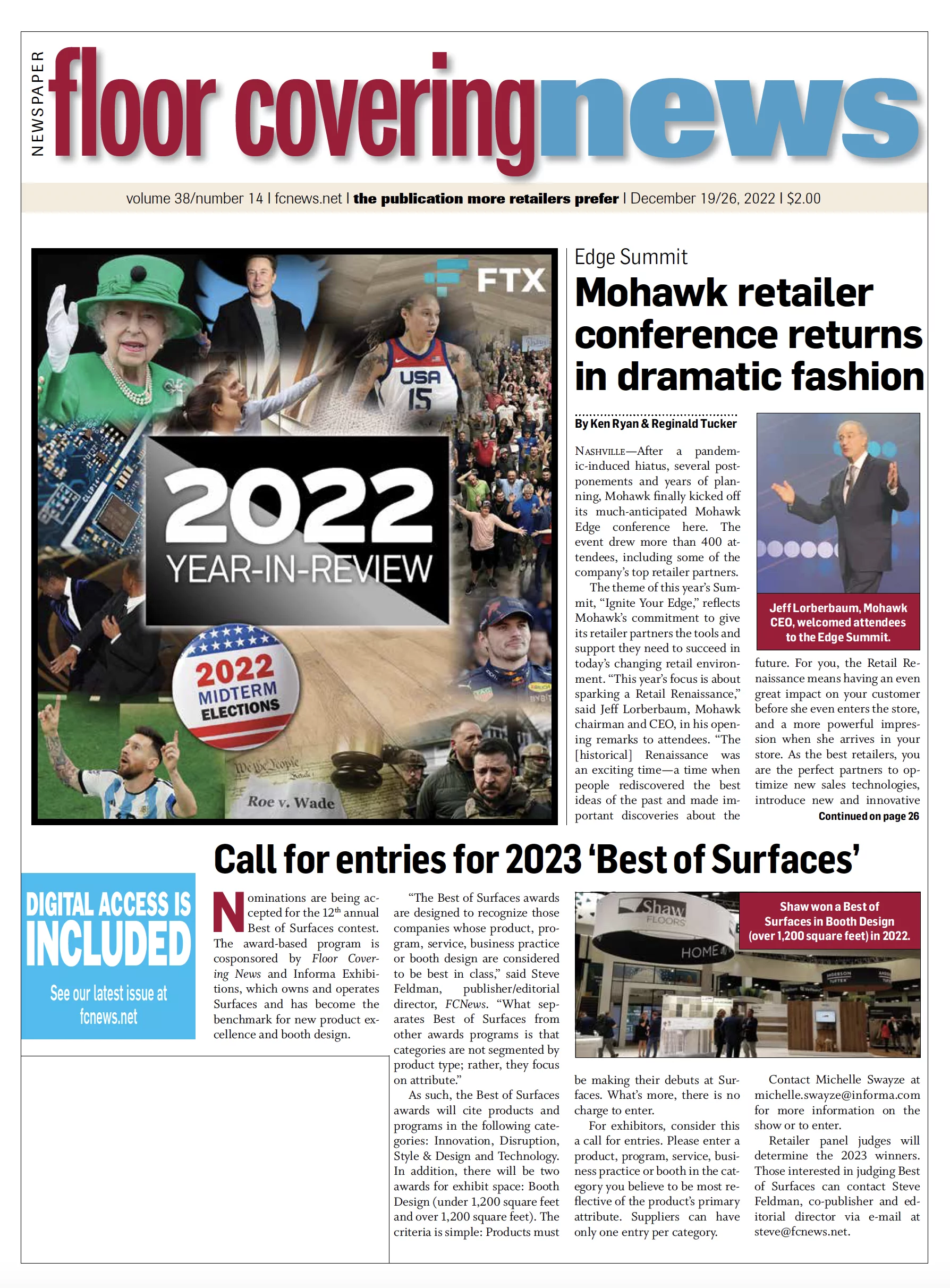 This is generally the time of the year when most people—including business owners—think about goals, resolutions and objectives for the coming year. If you’re lucky enough to be one of the specialty floor covering retailers that posted record sales during the past two years, you’re probably wondering how you’re going to maintain strong sales growth for 2023.
This is generally the time of the year when most people—including business owners—think about goals, resolutions and objectives for the coming year. If you’re lucky enough to be one of the specialty floor covering retailers that posted record sales during the past two years, you’re probably wondering how you’re going to maintain strong sales growth for 2023.
Luckily, there’s a formula you can follow to reach/exceed your goals for success in 2023. This exercise is going to be like baking a cake—you will need several key ingredients: your revenue goal for 2023; your average ticket size; and your average closing rate.
As we approach 2023, you should begin with a vision—a target you would like to hit. It’s like going on a trip; you need to know the destination. But you also need to know where you’re at. The next step is building your map to reach your destination. The simplest of goals is the total revenue you’re looking to generate. As a rule of thumb I like to add 30% to my previous year’s sales.
For this particular exercise, let’s say you did $1.5 million last year. A 30% increase would be $1,950,000. In 2023, we are going to do $1,950,000.
That brings us to your average ticket size. It’s simple to figure out—it’s your total sales divided by how many customers you sold. We had $1.5 million in sales and 312 customers; therefore, our average ticket is $4,807.
Next is determining your closing rate. How many leads/opportunities did you have divided by how many customers you sold. Before you calculate that, you need to define what a true lead is. A lead is when you capture their information, i.e., name, address, phone number, e-mail, etc. It’s someone you can market and advertise to. Someone who you will, hopefully, provide an estimate to.
Now, take your sold customers and divide that number by your total leads. That will give you your closing rate. I had 312 sold customers and 852 leads. Therefore, 312 divided by 852 = a 37% closing rate.
In summary: My goal for 2023 is $1,950,000. Divided by my average ticket of $4,807 = 405 customers needed; 405 divided by 37% = 1,094 leads/opportunities needed; 1,094 divided by 12 months = 92 leads/month. 1,094 divided by 52 weeks = 21 leads/week.
Now you have your “magic number”—21. That’s the number you should focus on and review every week. How do you get to 21 leads per week? It’s very difficult to focus on a dollar amount; it’s hard to go after money. But you can focus and measure your lead count. The monthly number is good to know so you can measure your progress every month.
What marketing tactics will you employ to get 21 leads a week? What can you do better? Boost your SEO/PPC; leverage your Google Business Profile; promote on Facebook; network in your community; market to previous customers.
If you would like to reach your goals beyond increasing your closing rate, you should also consider raising your prices, which will boost your average ticket. If you do these things then you need fewer leads each week.
Jerry Levinson, a former retailer, owns Profit Now 4 Flooring Dealers. He provides sales training, processes and systems for flooring dealers to help them grow their business and profits while working fewer hours. He also runs the Flooring Dealers & More group on Facebook.

